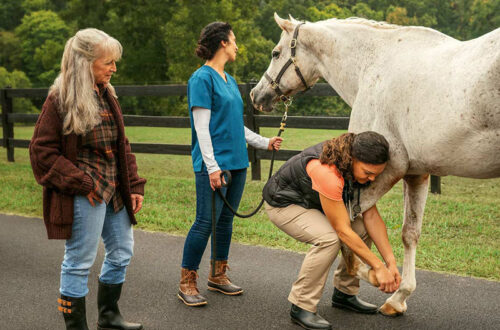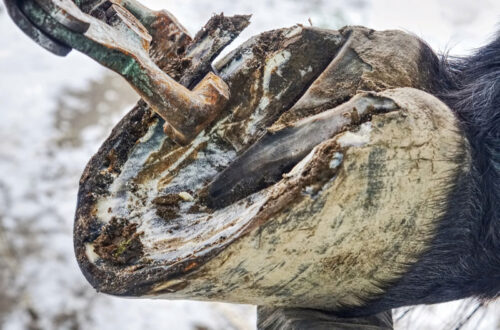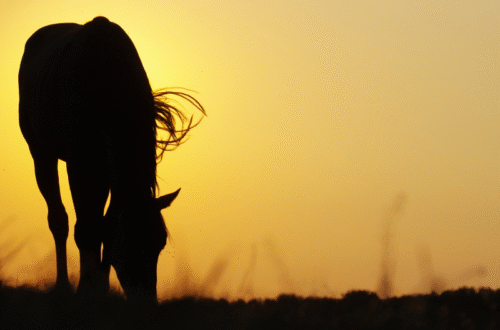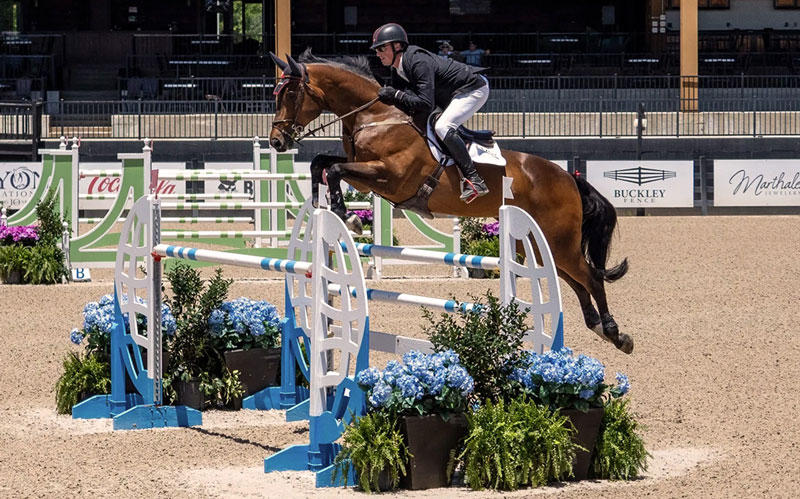
Caring for Elite Equine Athletes Competing on the World Stage
By Liberty Getman, DVM, DACVS, Equine Technical Services, Zoetis
Do you ever think about what it takes to become an Olympian? As many of us gear up to watch the Summer Olympic Games in Paris, we’ll hear time and time again about athletes’ preparation—and the army of supporters who have stood behind them over the years as they ascend to the world stage. But what about horses? What does it take to care for them as they prepare for competition? Surprisingly, there are many parallels between what it truly takes to support an elite human athlete and how horses are cared for during training for equine competitions.
In addition to working as an equine surgeon with a sports medicine specialty for over 17 years, I’ve trained and competed in ultramarathon races and have seen these parallels firsthand. Ultramarathons are races longer than a marathon (26.2 miles) and can range from 50 to 200 miles or longer. Whether a human or equine athlete, it takes diligence and the right team behind you to establish a strong training foundation to succeed. My support network includes a physical therapist who I work with several times a month, along with instructors in cross-training and yoga and nutritional guidance to help support my body through this demanding work.
Horses preparing for Olympic competition have similar demands related to their care. The keys to being successful in equine or human athletic endeavors comes down to having a solid support network, nailing the simple things, and being proactive. Here’s what that means.
It Takes a Village
Have you heard the saying, “It takes a village”? Well, it’s also appropriate when you think about what it takes to care for a horse, especially one training for the Olympics. Ensuring a horse stays performance-ready takes a cast of valuable players, all with their own expertise and responsibilities, and all just as dedicated to your horse’s health and the competition as you are.
I recently caught up with eventing Olympian Doug Payne, who competed in the 2020 Tokyo Olympics. In addition to running the world-class training center Payne Equestrian, he echoed the need for an army of strong support behind him, saying, “Being on the road for over 40 weeks of the year and managing an Olympic training schedule could not be done without a world-class team. I’ve focused on building a support system of professionals who care about the horses as much as I do, and I trust my team implicitly to ensure our horses stay healthy and are ready for showtime. That goes for everyone, from the grounds staff to the grooms, veterinarians and trainers.”
Similarly, when I train for an ultramarathon, I have a team standing behind me. On a weekly basis, it’s not unusual to have appointments with my physical therapist, converse with my nutritionist, and even meet with my trainer for exercise plans beyond just running. My team is invaluable to my success on the trail to the finish line, just like the team standing behind every Olympian at the Paris Games and the one standing behind you and your horse.
For the Olympic-level horse, the care team behind the scenes often comprises a wide range of professionals, including:
- Veterinarians
- Veterinary technicians
- Farriers
- Riders
- Trainers
- Chiropractors
- Acupuncturists
- Nutritionists
- Grooms
- Massage therapists
- Physiotherapists
- Sports medicine and rehabilitation specialists
While that might seem like a lot, it’s only a few of the people responsible for making it all happen. From the groundskeeper who notices a hole in the ground, a loose fence post, or a nail sticking out of a board to the veterinarian who administers preventative care, every team member plays a vital role in keeping a horse healthy and on track for competition.
The same goes for your horse. Whether an elite equine athlete, a local hunter-jumper, or an old, faithful senior horse, he could benefit from having several professionals with varying disciplines to help support his well-being. It’s quite common for a horse’s groom, farrier, or massage therapist to notice when something appears off, and they can flag it for the rider, owner and, ultimately, the veterinarian to evaluate. While you may not have as big of a team as horses competing on the world stage, it still takes the dedication and care of many to ensure your horse lives a healthy and happy life.
The Little Things Add Up
You don’t become an elite athlete overnight. Discipline, determination, and ensuring all the basics are met create the springboard for success. What’s more, it’s often the little things that have the biggest impact. When I talk to people about training for an ultramarathon, they often ask about the long runs or intense workouts that my preparation requires. But there are more mundane things that play an equally critical role in my and any athlete’s success, including proper nutrition, high-quality and consistent rest, and getting used to the game-day atmosphere.
The same goes for horses. In addition to a well-planned training regime, good nutrition, rest, quality care and preparation for the chaos of a competition like the Olympic Games are non-negotiable for a horse to be healthy and succeed at high-level competition.
“Ultimately, horses’ comfort level on the road plays a major role in their success. We work a lot on desensitizing our horses to novel environments at home by making our training environment as exciting as we can to mimic the intensity of the event atmosphere. We plan to finish up in the barn by 4 p.m. to ensure the horses get plenty of rest with peace and quiet during otherwise hectic periods of time. We also bring our own grain and ensure the highest-quality hay when we travel to ensure proper nutrition and keep the horse’s routine as similar as we can to what they experience at home,” said Payne.
When it comes to nutrition, be sure to evaluate your horse’s diet and start with simple, high-quality forage and grain. In both human and horse training, there’s often a temptation to focus our efforts on adding supplement after supplement, without tending to the underlying diet. But no amount of supplements can counteract poor nutrition.
The same goes for exercise and rest. Exercising more might seem like a way to speed up progress, but without good sleep and recovery time for muscles, all that extra exercise is often a wasted effort.
Prevention Beats Intervention
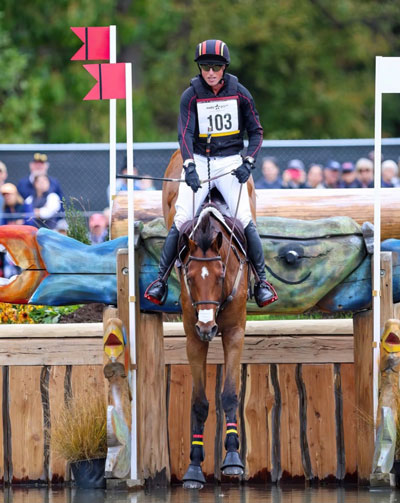
Photo courtesy of Payne Equestrian LLC
As I mentioned, when I’m training, I have frequent checkups with my team, including my doctors and physical therapist, to make sure I’m not overstressing my body. There’s nothing worse than spending months training, only to be taken out by an injury that could have been avoided by more regular check-ins with your team. Again, the same goes for horses.
Staying consistent and checking in frequently on all aspects of your horse’s health and care is the best way to avoid catastrophic injury and achieve your goals, whether for an Olympic horse are any horse. In short, be prepared, preventive, and proactive.
In our conversation, Payne mentioned the importance of consistency and of not overcomplicating things. “Consistency and simplicity go a long way toward providing a good baseline of health,” said Payne. “We work with our veterinarian for annual vaccinations for core and risk-based diseases, along with frequent, targeted deworming.”
In my work, I’ve also found that people tend to think of certain measures only after an injury has occurred. This can be a huge mistake, and many therapies are best used early instead of when an injury has reached the level of catastrophe. For example, after a long training run, I’ll often use a massage gun or ice my muscles and joints to help with recovery. It’s not because I’ve been injured; rather, it’s a way to speed recovery, ensure my body can keep up, and prevent greater injuries down the road.
For performance horses, regenerative medicine devices are gaining in popularity and are a great first-line option to help manage lameness and osteoarthritis with a comprehensive, all-natural option. One option features a 20-minute process that uses the horse’s own blood to create a concentrated solution that amplifies the healing process when injected into the joint, and it can be performed right at your farm.1 There are also other regenerative medicine device alternatives for tendon and ligament injuries.
These treatments are showing promising results for everyday and sport-related injuries, and you don’t need a competition horse to use them. If your horse is dealing with these types of injuries, ask about these devices during your next visit with the veterinarian. By relying on our teams, taking care of the small things, and being proactive and preventive, we can ensure our horses have the best chance of avoiding injury and leading healthy, happy lives.
For more on some of the preventive care measures mentioned here for and other great horse health information, visit the following blogs:
- What vaccines does your horse need?
- Is your horse protected?
- Stay ahead of parasites with targeted deworming
- Can you spot the signs of dental pain in your horse?
- Tips to prepare for successful hoof care visits
References
1. Linardi R, Dodson M, Moss K, et al. The effect of autologous protein solution on the inflammatory cascade in stimulated equine chondrocytes. Frontiers Vet Sci. 2019;6(64): 1-9.
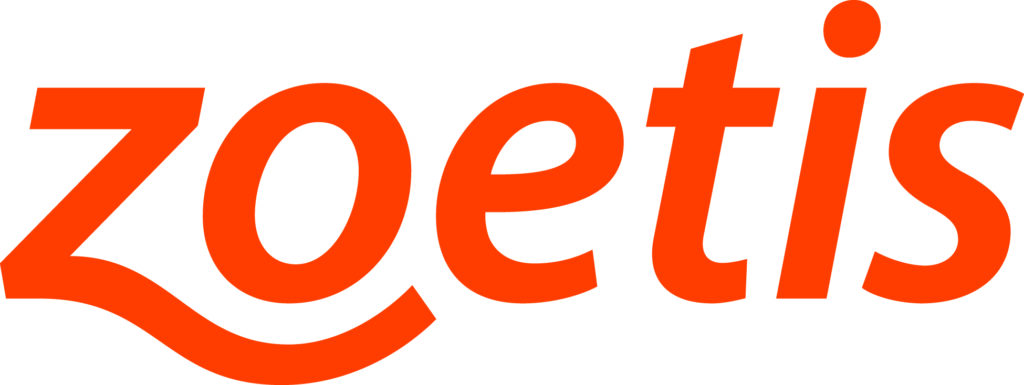
About Zoetis— Official USPC Equine Health and Wellness Partner
To learn more about how Zoetis is making lives better for horses and those who care for them, visit zoetisequine.com and Zoetis Equine on Facebook and Instagram.



